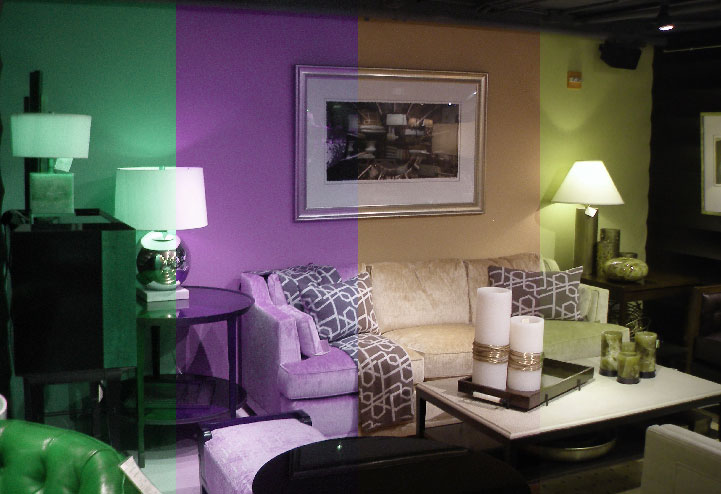
Artists and poets have fallen in love with color for as long as there has been human culture, and there are a million beautiful color names that have been invented to describe the rich palettes that fill our world. However, in an attempt to standardize a language of color for optimal communication, and to bring color analysis into the realm of science, several color classification systems have been developed. The Munsell Color System, created by Albert H. Munsell in the early 1900s, is an example of a good, comprehensive classification system for organizing colors and analyzing the relationships between them.
Albert Munsell observed that the colors we see actually have three different dimensions, which vary independently of each other. Two of these dimensions come from the two types of photoreceptive cells in our eyes, and the third is a combination of the two working together.
The Three Characteristics of Any Color
1. Hue – the particular wavelength in the rainbow or color wheel (detected by the cones in the eye)
2. Value – the lightness or darkness of the color, measured by the amount of black and white mixed in (detected by the rods in the eye)
3. Chroma (Sometimes called “intensity” or “saturation”) – the degree of pure color versus neutral tones (black/white/gray) in the mixture (detected by the rods and the cones together)
When you discuss color for the purposes of architectural decorating, all three of these characteristics are important, and all of them have a distinct impact on the color scheme that they create. The hue, for example, determines the warmth or coolness of the color, and also plays a role in its psychological impact (we will discuss the basic psychological impact of all of the basic rainbow colors in another installment). The value determines how much light the color reflects, which plays a role in “color contouring“, or using color to affect the perceived dimensions of a space. Lighter colors make an area look lighter and more spacious, while darker colors make an area look heavier and more enclosed. Finally, the chroma of a color plays a strong role in how aggressively the color grabs your attention. If you want your decor to fade into the background, you want to use colors of a lower chroma than if you want your decor to attract attention.
When deciding on a color scheme, consider the hue, value, and chroma of all of your colors carefully, and watch how you mix and match – there is an infinite variety of beautiful color schemes out there.